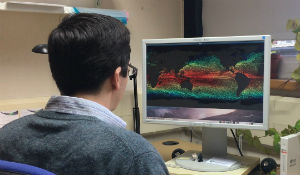Random discovery improves climate simulations
Release Date 28 November 2016

Scientists have discovered a new method for improving the accuracy of climate simulations, equivalent to a significant advance in supercomputer technology.
But the improvement has come not from faster processing power or a better understanding of climate physics - but by throwing in completely random numbers.
A new study, led by the University of Reading and published on 23 November in Journal of Climate, looks at how small-scale ocean currents could be included in climate simulations, but without the need for a massive increase in computer processing power, which would take time and money.
Scientists attempted to bypass the difficulty of accurately capturing these water movements, by making the effects of the small currents entirely random. The result was that the simulations got significantly better, with ocean temperature discrepancies improving by up to 60%.
Dr Paul Williams, a climate scientist at the University of Reading who led the research, said: "Just as the flap of a butterfly's wings in Brazil may cause a tornado in Texas, the flap of a fish's fins may change the ‘weather' of the ocean.
"The world's fastest supercomputers are not powerful enough to capture these random effects, but it turns out we can simulate their randomness with actual random numbers.
"Small-scale ocean currents are fiendishly difficult to recreate in models, but we found that random numbers do a good job of standing in for them. This approach leads to significant improvements in our climate modelling abilities."
Random numbers are already used routinely in atmosphere models to improve weather forecasts. The new study shows - for the first time - how random numbers in state-of-the-art ocean models could improve climate simulations, too.
Climate simulations are virtual models of the Earth in which the atmosphere and ocean are split up into tiny grid squares, like the pixels in a digital camera image. The grid squares allow the model to simulate how the important climate processes interlink and affect one another.
Limited computer power and the sheer complexity of faithfully modelling tiny water movements across vast oceans have held climate scientists back. This research shows there are other effective ways of adding these minute but important details.
The new study was produced by a team of scientists at the University of Reading, National Centre for Atmospheric Science, Met Office Hadley Centre, and University of East Anglia.
